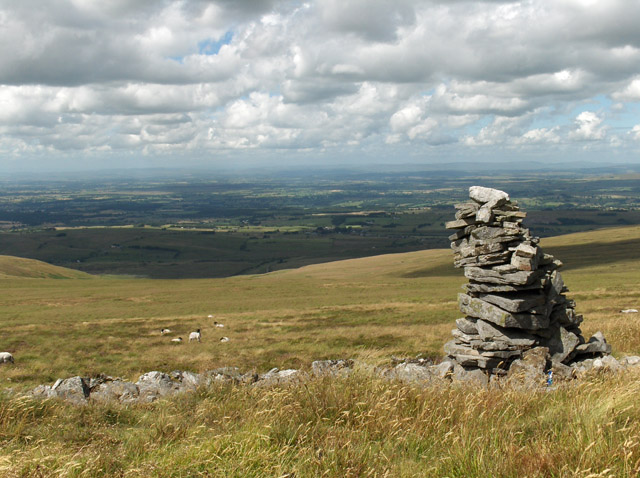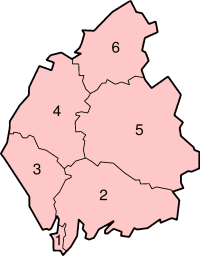|
Midgeholme
Midgeholme is a hamlet and civil parish in City of Carlisle district, Cumbria, England. At the 2001 census the parish had a population of 67. The parish is bordered to the north by Farlam; to the east by Hartleyburn and Knaresdale with Kirkhaugh, both in Northumberland; to the south by Geltsdale; and to the west by Hayton. Cold Fell, at , is on the boundary of Midgeholme and Geltsdale parishes. The hamlet of Midgeholme and the disused Midgeholme Coalfield are in the north east of the parish, near the A689 road between Brampton and Lambley. Listed buildings the only listed building In the United Kingdom, a listed building or listed structure is one that has been placed on one of the four statutory lists maintained by Historic England in England, Historic Environment Scotland in Scotland, in Wales, and the Northern Irel ... in the parish is Tarn House, built in the late 15th century and extended and altered in 1843, at Grade II*. It overlooks Tindale Tarn, the n ... [...More Info...] [...Related Items...] OR: [Wikipedia] [Google] [Baidu] |
Midgeholme Coalfield
The Midgeholme Coalfield is a coalfield in Midgeholme, on the border of Cumbria with Northumberland in northern England. It is the largest of a series of small coalfields along the south side of the River Tyne, Tyne Valley and which are intermediate between the Northumberland Coalfield, Northumberland and Durham Coalfields to the east and the Cumberland Coalfield to the west. Like the other small coalfields to its east, this small Inliers and outliers (geology), outlier of the Coal Measures at Midgeholme occurs on the Alston Block, Stublick-Ninety Fathom Fault System, a zone of fault (geology), faults defining the northern edge of the Alston Block otherwise known as the North Pennines. It is recorded that coal was being mined at Midgeholme in the early seventeenth century. In the 1830s coal trains were being hauled from Midgeholme Colliery along the Brampton Railway by Stephenson's Rocket. The early workings have left a legacy of spoil heaps, bell pits, shafts and adits. There is n ... [...More Info...] [...Related Items...] OR: [Wikipedia] [Google] [Baidu] |
Lambley, Northumberland
Lambley, formerly known as Harper Town, is a village and former civil parish, now in the parish of Coanwood, in Northumberland, England about southwest of Haltwhistle. The village lies adjacent to the River South Tyne. In 1951 the parish had a population of 298. The place name Lambley refers to the "pasture of lambs". Lambley used to be the site of a small convent of Benedictine Nuns, founded by Adam de Tindale and Heloise, his wife, in the 12th century. The Scots led by William Wallace devastated it in 1296 owland gives 1297 However it was restored and one William Tynedale was ordained priest to the nunnery in about 1508 – most likely not William Tyndale, the reformer, as once believed but another man of the same name. At the time of the suppression of religious houses by Henry VIII, the nunnery contained six inmates. Nothing now remains but the bell from the nunnery, which hangs in the church, and a few carved stones. The village lies in the Midgeholme Coalfield and there ... [...More Info...] [...Related Items...] OR: [Wikipedia] [Google] [Baidu] |
City Of Carlisle
The City of Carlisle ( , ) is a local government district of Cumbria, England, with the status of a city and non-metropolitan district. It is named after its largest settlement, Carlisle, but covers a far larger area which includes the towns of Brampton and Longtown, as well as outlying villages including Dalston, Scotby and Wetheral. In 2011 the district had a population of 107,524, and an area of . Cumbria County Council Census key statistics summary The current city boundaries were set as part of the provisions of the Local Government Act 1972, and cover an amalgamation of two former local government districts, the City and County Borough of Carlisle and the Border Rural District of Cumberland. The City of Carlisle shares a border with Scotland (to the north), and is bounded on the southwest by the borough of Allerdale, and on the south by the district of Eden. The county of Northumberland is to the east. Although the present boundaries date to the 20th century, the c ... [...More Info...] [...Related Items...] OR: [Wikipedia] [Google] [Baidu] |
Civil Parishes In Cumbria
A civil parish in England is the lowest unit of local government in England, local government. There are 284 civil parishes in the ceremonial county of Cumbria, with most of the county being parished, and Allerdale, Borough of Copeland, Copeland, Eden District, Eden and South Lakeland being entirely parished. At the 2001 census, there were 359,692 people living in those 284 parishes, accounting for 73.8 per cent of the county's population. The extent of modern Civil parishes are largely geographically based on historic Church of England parish boundaries, which were ecclesiastical divisions that had acquired civil administration powers managed by the Vestry committee.Angus Winchester, 2000, ''Discovering Parish Boundaries''. Shire Publications. Princes Risborough, 96 pages History The Highways Act 1555 made parishes responsible for the upkeep of roads. Every adult inhabitant of the parish was obliged to work four days a year on the roads, providing their own tools, carts and ho ... [...More Info...] [...Related Items...] OR: [Wikipedia] [Google] [Baidu] |
United Kingdom Census 2001
A nationwide census, known as Census 2001, was conducted in the United Kingdom on Sunday, 29 April 2001. This was the 20th UK census and recorded a resident population of 58,789,194. The 2001 UK census was organised by the Office for National Statistics (ONS) in England and Wales, the General Register Office for Scotland (GROS) and the Northern Ireland Statistics and Research Agency (NISRA). Detailed results by region, council area, ward and output area are available from their respective websites. Organisation Similar to previous UK censuses, the 2001 census was organised by the three statistical agencies, ONS, GROS, and NISRA, and coordinated at the national level by the Office for National Statistics. The Orders in Council to conduct the census, specifying the people and information to be included in the census, were made under the authority of the Census Act 1920 in Great Britain, and the Census Act (Northern Ireland) 1969 in Northern Ireland. In England and Wales these re ... [...More Info...] [...Related Items...] OR: [Wikipedia] [Google] [Baidu] |
Farlam
Farlam is a village and civil parish in the City of Carlisle District, in the English county of Cumbria. The village is about southeast of the small town of Brampton, Carlisle, Brampton and east of the city of Carlisle, Cumbria, Carlisle. While the population has fluctuated over time, in the United Kingdom Census 2001, 2001 UK Census, the population stood at 590: 291 males and 299 females. The 2011 Census showed a population of 669: 331 males and 338 females. History Origins The name Farlam is thought to originate from the Old English ''fearn'' and ''ham'', the latter meaning ''village'' or ''village community'', translating to a 'Ferny-clearing homestead/village' or perhaps, 'hemmed-in land by a ferny clearing'. Farlam was originally divided into two townships, East Farlam and West Farlam, with a combined population in 1811 of 672 inhabitants and 115 houses. Hallbankgate and Kirkhouse were two hamlets located within the township of East Farlam, the former four miles south ea ... [...More Info...] [...Related Items...] OR: [Wikipedia] [Google] [Baidu] |
Knaresdale With Kirkhaugh
Knarsdale, historically Knaresdale, is a village and former civil parish, now in the parish of Knaresdale with Kirkhaugh, in Northumberland, England about north of Alston. The village takes its name from the Knarr Burn: Knarr means 'rugged rock'. In 1951 the parish had a population of 289. History The manor of Knarsdale was held in medieval times by the Swinburn family, and in 1313 Hugh de Swinburn was rector of Knarsdale. It was later held by the Wallis family, who sold it in 1730 to John Stephenson, a Newcastle merchant. One of the Stephenson family built Alston market cross. But in 1769 Knarsdale was sold to James Wallace, a distinguished lawyer. His son Thomas, for services to his country, was created Baron Wallace of Knarsdale. The family also owned Featherstone Castle, and Hodgson described Knarsdale Hall as having declined in importance — ''a gentleman's place of the 17th century now and for a long time since occupied by the farmer of the adjoining gr ... [...More Info...] [...Related Items...] OR: [Wikipedia] [Google] [Baidu] |
Northumberland
Northumberland () is a county in Northern England, one of two counties in England which border with Scotland. Notable landmarks in the county include Alnwick Castle, Bamburgh Castle, Hadrian's Wall and Hexham Abbey. It is bordered by land on three sides; by the Scottish Borders region to the north, County Durham and Tyne and Wear to the south, and Cumbria to the west. The fourth side is the North Sea, with a stretch of coastline to the east. A predominantly rural county with a landscape of moorland and farmland, a large area is part of Northumberland National Park. The area has been the site of a number of historic battles with Scotland. Name The name of Northumberland is recorded as ''norð hẏmbra land'' in the Anglo-Saxon Chronicle, meaning "the land north of the Humber". The name of the kingdom of ''Northumbria'' derives from the Old English meaning "the people or province north of the Humber", as opposed to the people south of the Humber Estuary. History ... [...More Info...] [...Related Items...] OR: [Wikipedia] [Google] [Baidu] |
Geltsdale
Geltsdale is a hamlet and former civil parish, now in the parish of Castle Carrock, in the Cumberland district, in the ceremonial county of Cumbria, England, to the southeast of Castle Carrock village. In 2001 the parish had a population of 6. From 1858 Geltsdale was a civil parish in its own right. On 1 April 2003 the parish was abolished and merged with Castle Carrock. The Geltsdale Reservoir railway ran in the vicinity. The local landscapes are under several levels of protection. Two of the protected areas cover a large area: * the North Pennines Area of Outstanding Natural Beauty * the North Pennines Moors Special Protection Area (147,276 ha) Geltsdale & Glendue Fells Site of Special Scientific Interest A Site of Special Scientific Interest (SSSI) in Great Britain or an Area of Special Scientific Interest (ASSI) in the Isle of Man and Northern Ireland is a conservation designation denoting a protected area in the United Kingdom and Isle of ... has an area of ... [...More Info...] [...Related Items...] OR: [Wikipedia] [Google] [Baidu] |
Cumbria
Cumbria ( ) is a ceremonial and non-metropolitan county in North West England, bordering Scotland. The county and Cumbria County Council, its local government, came into existence in 1974 after the passage of the Local Government Act 1972. Cumbria's county town is Carlisle, in the north of the county. Other major settlements include Barrow-in-Furness, Kendal, Whitehaven and Workington. The administrative county of Cumbria consists of six districts ( Allerdale, Barrow-in-Furness, Carlisle, Copeland, Eden and South Lakeland) and, in 2019, had a population of 500,012. Cumbria is one of the most sparsely populated counties in England, with 73.4 people per km2 (190/sq mi). On 1 April 2023, the administrative county of Cumbria will be abolished and replaced with two new unitary authorities: Westmorland and Furness (Barrow-in-Furness, Eden, South Lakeland) and Cumberland ( Allerdale, Carlisle, Copeland). Cumbria is the third largest ceremonial county in England by area. It i ... [...More Info...] [...Related Items...] OR: [Wikipedia] [Google] [Baidu] |
Cold Fell (Pennines)
Cold Fell is a mountain in the northern Pennines, in Cumbria, England. Lying among the northernmost uplands of the North Pennines Area of Outstanding Natural Beauty, AONB, it is the most northerly mountain in Cumbria and is listed as a Marilyn (geography), Marilyn due to its prominence of 168m. References Marilyns of England {{Cumbria-geo-stub ... [...More Info...] [...Related Items...] OR: [Wikipedia] [Google] [Baidu] |



